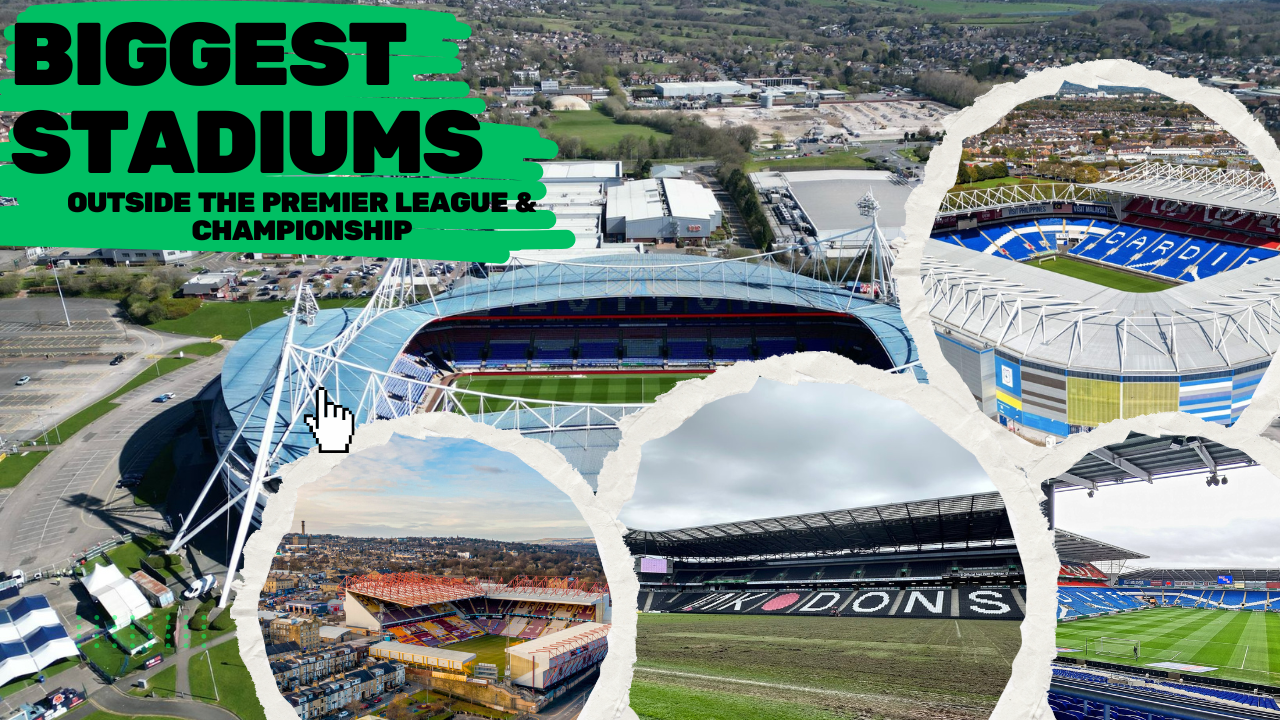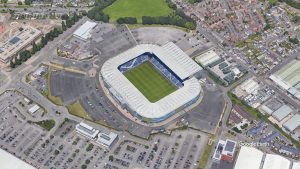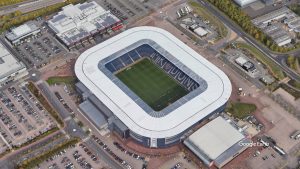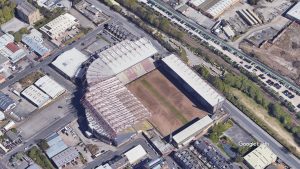English football is famous for its big crowds and iconic stadiums, but not all of them are found in the Premier League or Championship. Several clubs in the lower leagues still play in large, modern, or historic grounds that were built for higher levels of the game. These stadiums have hosted top-flight matches, cup finals, European nights, and even international fixtures, yet today they are home to clubs in League One or League Two.
In this article we will have a look at the 5 biggest stadiums outside the Premier League & Championship for the 2025-26 season.
Cardiff City Stadium – Cardiff City
The Cardiff City Stadium opened in July 2009 and replaced Cardiff’s old home, Ninian Park. With a capacity of around 33,000 seats, it is the second largest stadium in Cardiff and in Wales.
Cardiff City Football Club was founded in 1899 and joined the Football League in 1920. It is the only non-English side to have won the FA Cup, achieving the feat in 1927. The team has spent 17 seasons in the top tier of English football and two in the Premier League. Throughout their history have mostly competed in the second and third tiers.
Stadium MK – Milton Keynes Dons
Stadium MK, located in Milton Keynes, was opened in 2007. It has a capacity of 30,500 and is the biggest stadium in the English League 2. As well as hosting MK Dons’ matches, it has staged fixtures for the UEFA Women’s Euro 2022.
Milton Keynes Dons were formed in 2004 following the relocation of Wimbledon F.C. to Milton Keynes. The club has largely played between League One and League Two, with their best season coming in 2015–16 when they competed in the Championship.
Toughsheet Community Stadium – Bolton Wanderers
The Toughsheet Community Stadium, home to Bolton Wanderers, opened in 1997 as the Reebok Stadium, replacing the club’s historic Burnden Park. It has a capacity of just under 29,000,
Bolton Wanderers were founded in 1874 and they were one of the 12 founding members of the Football League in 1888. The club has won the FA Cup four times and spent 11 consecutive seasons in the Premier League between 2001 and 2012. Bolton also competed in the UEFA Cup during the mid-2000s. Financial difficulties in the late 2010s led to relegation as far as League Two, but the club has since stabilised in League One.
DW Stadium – Wigan Athletic
The DW Stadium opened in 1999 and replaced Springfield Park, which had been Wigan Athletic’s home since their formation. The stadium, originally named the JJB Stadium has a capacity of just over 25,000 seats.
Wigan Athletic were founded in 1932 and were elected to the Football League in 1978. For many years they remained in the lower divisions before the club reached the Premier League in 2005 and stayed there for eight seasons. Their greatest achievement came in 2013 when they won the FA Cup, defeating Manchester City in the final. Although they were relegated from the Premier League in the same season, the victory qualified them for the UEFA Europa League. Wigan have since experienced financial difficulties and now play in League One.
Valley Parade – Bradford City
Valley Parade, currently known as the University of Bradford Stadium, is located in Bradford, West Yorkshire. It was originally built in 1886 and became the home of Bradford City after the club was formed in 1903. The stadium has been redeveloped several times and today has a capacity of over 25,000. It is remembered for the tragic fire of May 1985 during a match against Lincoln City, in which 56 people lost their lives.
Bradford City were founded in 1903 and admitted directly into the Football League’s Second Division the same year. The club’s greatest triumph came in 1911 when they won the FA Cup. Bradford spent two seasons in the Premier League from 1999 to 2001. More recently, the club gained attention for their run to the 2013 League Cup Final as a League Two side, defeating several Premier League teams along the way. Today, they play in League One.









